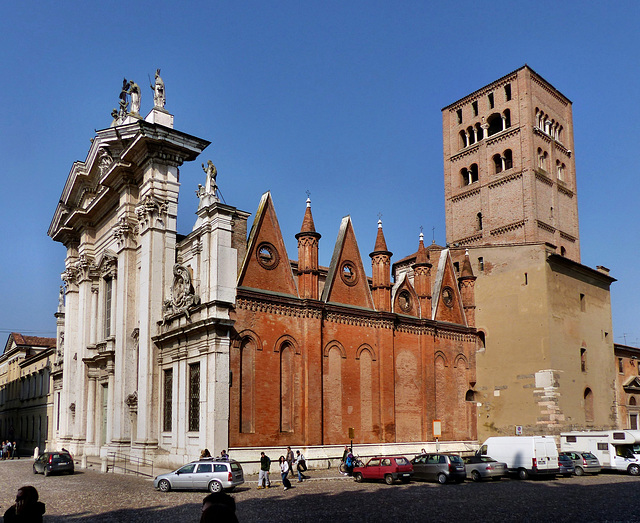Mantova - Piazza Sordello
Mantova - Arcades
Mantova - Basilica di Sant'Andrea
Mantova - Basilica di Sant'Andrea
Mantova - Rotonda di San Lorenzo
Mantova - Rotonda di San Lorenzo
Mantova - Rotonda di San Lorenzo
Mantova - Rotonda di San Lorenzo
Mantova - Rotonda di San Lorenzo
Mantova - Rotonda di San Lorenzo
Mantova - Rotonda di San Lorenzo
Cremona - Sperlari
Cremona - Baptistery
Cremona - Baptistery
Cremona - Baptistery
Cremona - Baptistery
Cremona - Duomo di Cremona
Cremona - Duomo di Cremona
Cremona - Duomo di Cremona
Cremona - Duomo di Cremona
Cremona - Palazzo Comunale
Pavia - Duomo di Pavia
Pavia - San Pietro in Ciel d'Oro
Pavia - San Pietro in Ciel d'Oro
Pavia - San Pietro in Ciel d'Oro
Pavia - San Pietro in Ciel d'Oro
Pavia - San Pietro in Ciel d'Oro
Pavia - San Pietro in Ciel d'Oro
Pavia - San Pietro in Ciel d'Oro
Pavia - San Pietro in Ciel d'Oro
Pavia - San Pietro in Ciel d'Oro
Pavia - Ponte Coperto
Pavia - San Michele Maggiore
Pavia - San Michele Maggiore
Pavia - San Michele Maggiore
Pavia - San Michele Maggiore
Pavia - San Michele Maggiore
Pavia - San Michele Maggiore
Pavia - San Michele Maggiore
Pavia - San Michele Maggiore
Pavia - San Michele Maggiore
Pavia - San Michele Maggiore
Pavia - San Michele Maggiore
Pavia - San Michele Maggiore
Pavia - San Michele Maggiore
Pavia - San Michele Maggiore
Pavia - San Michele Maggiore
Pavia - San Michele Maggiore
Pavia - San Michele Maggiore
Pavia - San Michele Maggiore
Pavia - San Michele Maggiore
Pavia - San Michele Maggiore
Pavia - San Michele Maggiore
Pavia - San Michele Maggiore
Pavia - San Michele Maggiore
Rivolta d’Adda - Maria Assunta e San Sigismondo
Rivolta d’Adda - Maria Assunta e San Sigismondo
Rivolta d’Adda - Maria Assunta e San Sigismondo
Rivolta d’Adda - Maria Assunta e San Sigismondo
Rivolta d’Adda - Maria Assunta e San Sigismondo
Almenno San Bartolomeo - San Tomè
Almenno San Bartolomeo - San Tomè
Almenno San Bartolomeo - San Tomè
Mantova
Location
See also...
See more...Keywords
Authorizations, license
-
Visible by: Everyone -
All rights reserved
-
354 visits
Mantova - Duomo di Mantova


Mantua (ital. Mantova) was a settlemt on the banks of River Mincio in Etruscan times. In Roman times veteran soldiers were placed here. About 70 BC the Roman poet Virgil (aka "Publius Vergilius Maro") was born nearby.
After the end of the Roman Empire Mantua was invaded in turn by Goths, Byzantines, Longobards, and Franks. In the 11th century, Mantua became a possession of Boniface of Canossa, marquis of Tuscany.
During the 12th century the course of the River Mincio was altered, creating lakes, to reinforce the city's natural protection. Three of these lakes still remains today.
Under the House of Gonzaga, that ruled Mantua for more than three centuries (sometimes in a very despotic way), the city developed and became a center of Renaissance art. At the end of the long war of the Mantuan Succession the city was under Austrian rule.
Mantua was part of the Napoleon's Kingdom of Italy. Mantua returned to Austria in 1814. A revolt against the Austrians lasted from 1851 to 1855, but it was finally suppressed by the Austrian army. Finally in 1866 Mantua and the Lombardy were incorporated into the Kingdom of Italy.
Here is the "Duomo di Mantova", built in 1395–1401. The campanile is probably older, the Baroque facade was completed in 1761.
After the end of the Roman Empire Mantua was invaded in turn by Goths, Byzantines, Longobards, and Franks. In the 11th century, Mantua became a possession of Boniface of Canossa, marquis of Tuscany.
During the 12th century the course of the River Mincio was altered, creating lakes, to reinforce the city's natural protection. Three of these lakes still remains today.
Under the House of Gonzaga, that ruled Mantua for more than three centuries (sometimes in a very despotic way), the city developed and became a center of Renaissance art. At the end of the long war of the Mantuan Succession the city was under Austrian rule.
Mantua was part of the Napoleon's Kingdom of Italy. Mantua returned to Austria in 1814. A revolt against the Austrians lasted from 1851 to 1855, but it was finally suppressed by the Austrian army. Finally in 1866 Mantua and the Lombardy were incorporated into the Kingdom of Italy.
Here is the "Duomo di Mantova", built in 1395–1401. The campanile is probably older, the Baroque facade was completed in 1761.
Marco F. Delminho, Jeanne chevillard have particularly liked this photo
- Keyboard shortcuts:
Jump to top
RSS feed- Latest comments - Subscribe to the comment feeds of this photo
- ipernity © 2007-2024
- Help & Contact
|
Club news
|
About ipernity
|
History |
ipernity Club & Prices |
Guide of good conduct
Donate | Group guidelines | Privacy policy | Terms of use | Statutes | In memoria -
Facebook
Twitter

Sign-in to write a comment.